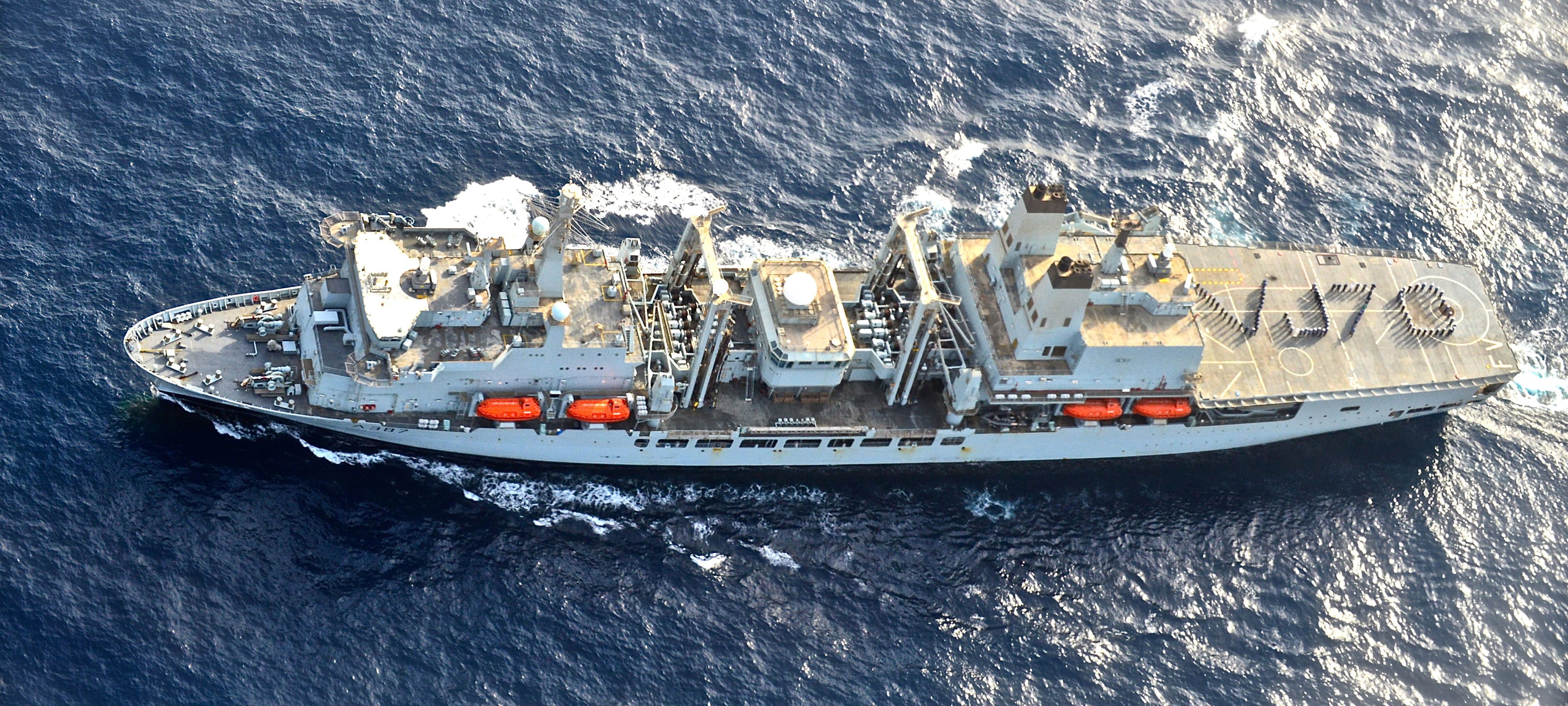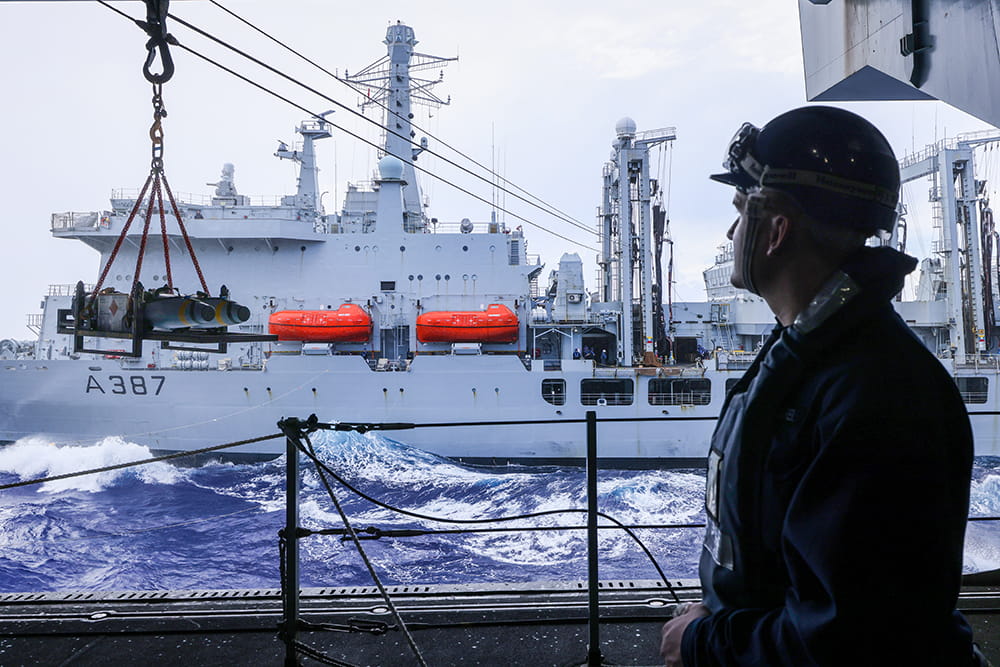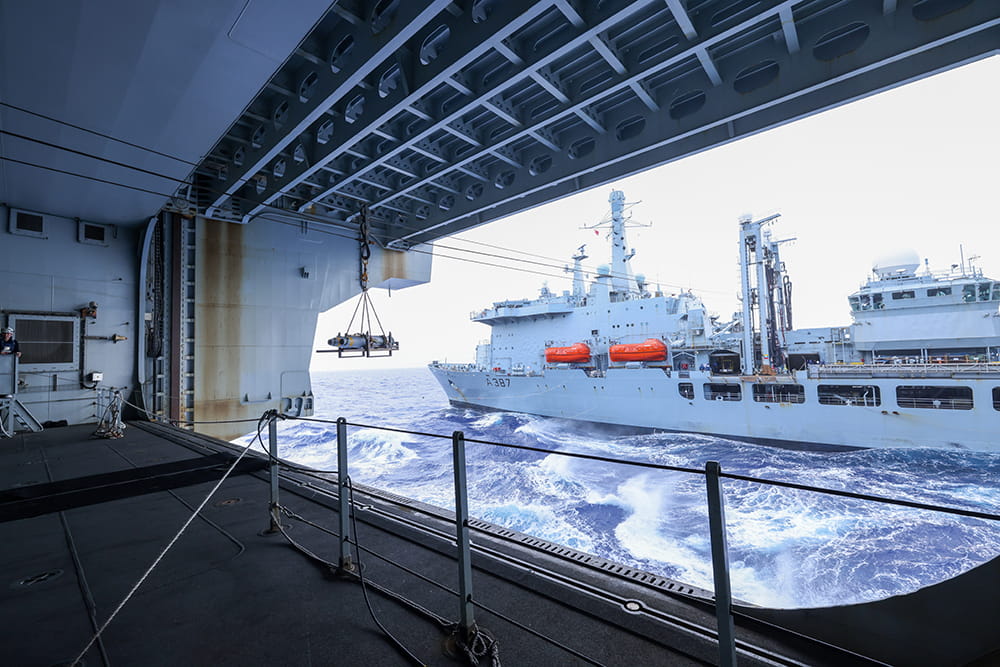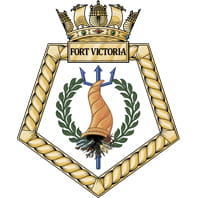Equipment / Ships
Fort class
These solid support ships are designed to carry a wide range of supplies to support other naval ships, as and offering extensive aviation facilities.
Fort Class solid replenishment ship

Displacement
31,565 tonnes
Length
203 metres
Speed
20 knots
range
N/A

Replenish the fleet
The solid support ships replenish warships of the Royal Navy, and its allies, with food, ammunition and explosives. These vessels are capable of replenishing at sea via six replenishment stations (three on each side), as well as using helicopters for vertical replenishment.

Supplying the carriers
RFA Fort Victoria (A387) is currently the UK’s only vessel capable of providing solid stores logistic support to the Queen Elizabeth Class of vessels. In a year, she is capable of conducting around 44 replenishments at sea, transferring 27,000 tonnes of fuel and 350 tonnes of ammo, as well as food and spares.
Units and squadrons
Discover the global operations and base of the Royal Navy ship units. Track our missions, explore facts and figures, and check our current and past deployment locations.
Join the Royal Fleet Auxiliary
Travel the world and support key operations. No two days are ever the same.
